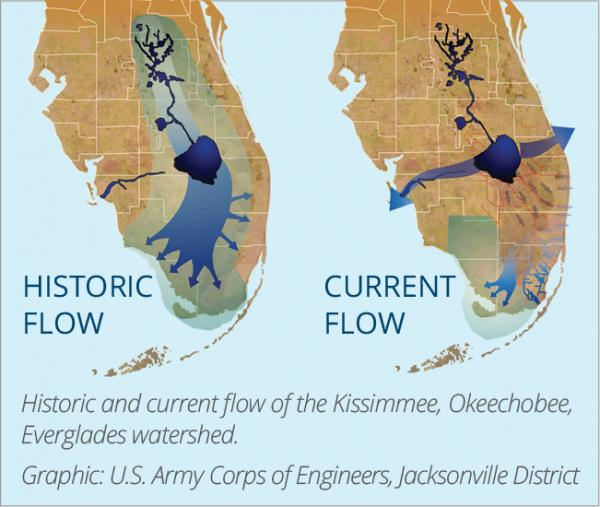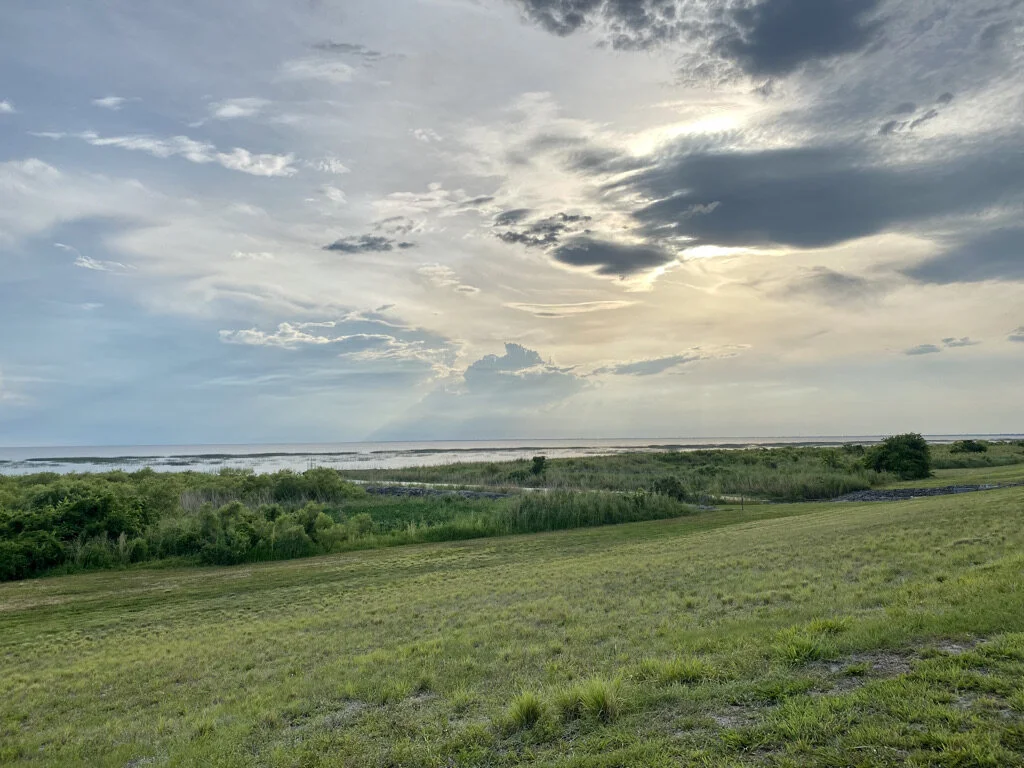Big Sugar's Impact on Florida
Red tide, black snow, tourism-related losses, respiratory illnesses, and more.
A majority of Americans are completely disconnected from agriculture. Don’t believe me? The USDA reported in 2019 that farming employment makes up 1.3% of the US workforce, roughly 2.6 million people (for reference, the US population is around 328.2 million people). Farming to most is the picturesque red barn and tractor, the good ole farm dog herding the sheep, and the rooster crowing in the morning. Ha, as if!
As I left Arden, I made my way northwest to Lake Okeechobee (you can see the highway in Figure 1 bisecting the farmland. Twentymile Bend to Canal Point) and traversed miles and miles across the Everglades Agricultural Area (EAA). The juxtaposition of these two types of agriculture is jarring. The 5-acre farm sits right next to 3,000 square kilometers (1,158 square miles) of agricultural land. What’s being produced on this land I can guarantee that you and I have consumed at one point in our lives.
Big Sugar and Its Impact on Florida
Fun fact: The EAA around Lake Okeechobee is the largest sugar-producing region in the United States. It accounts for nearly all of Florida’s sugar production, and Florida produces about half of the nation's sugar crop.
Figure 1: NASA’s Operational Land Image on Landsat 8 photographed multiple sugarcane fires burning near Belle Glade, Florida (Source)
When we talk about Big Sugar we’re typically talking about the three biggest producers: the Fanjul family's Florida Crystals, headquartered in West Palm Beach; the U.S. Sugar Corp. of Clewiston; and the 44-member Sugar Cane Growers Cooperative of Florida, located in Belle Glade.
Ah, sugar, sugar
Another fun fact, for about six months of the year, sugar growers will light sugarcane on fire to burn the leaves and tops off the plant. This leaves the cane material intact while making harvesting and transporting sugar cheaper.
Figure 2: A false-color, combining shortwave infrared, near-infrared, and blue light, making it easier to distinguish between fields that are unburned (green), recently burned (black), and recently harvested (brown). (Source)
The concentration of sugarcane production in this area, resulting management of water reservoirs, and frequent burns for transport have led to ongoing battles with environmentalists, local residents, and Big Sugar. Floridians have filed federal class-action lawsuits blaming Big Sugar for causing red tide, black snow, tourism-related losses, respiratory illnesses, and more.
While we have disconnected ourselves from the farms and farmers, the connection between the land, environment, and our food has and will always be constant. Unfortunately, our severed relationship with the land provides the cover and complacency for big ag to make decisions that prioritize profit over the environment and people.
Growing up in South Florida, I recall days of smelling these burns and attributing them to random fires in the Everglades. Little did I know that it was the sugarcane burning. Fast forward to the present day; I again experienced the impact of what’s happening at the EAA. I had intended to camp two nights at the Pahokee Marina on Lake Okeechobee, but the marina was closed due to a recent algae bloom.
What’s being done to fix this?
Aside from the ongoing class-action lawsuit, the Sierra Club, a grassroots environmental organization, has advocated for the end of pre-harvest sugar field burning since 2015. Their campaign is seeking to:
Eliminate burning within 10 miles of communities in the EAA and growing coastal towns and suburbs. This would reduce sources of sugarcane burning emissions by almost 60%.
Enact regulatory-grade air quality sensors in the EAA communities, including but not limited to Belle Glade, Pahokee, Indiantown, Loxahatchee, Wellington, and Royal Palm Beach.
Implement a reporting and verification system for “black snow” to the online Florida Forest Service prescribed burning web mapping service to monitor ash plumes from sugarcane burning.
Green harvesting is another proposed solution.1 Instead of burning the sugarcane, this method uses a mechanical harvester to mechanically separate the sugarcane leaves and tops from the sugar-bearing stalk. This method supposedly is more expensive and less productive than burnt cane harvesting2, but when you’re trying to balance the health of the Florida ecosystem, Florida’s tourism economy, and Floridians themselves it might be something worth considering.
Additionally, The U.S. Army Corps of Engineers, who is responsible for managing Lake Okeechobee, is currently revising its lake management policies to take into account a massive $1.8 billion upgrade of the dike that is scheduled to be completed by 2022 and the Comprehensive Everglades Restoration Plan (CERP), a multibillion-dollar project authorized by Congress in 2000. This 30-year plan aspires to increase freshwater storage, improve water quality, and re-establish the natural water flow through the greater Everglades ecosystem.
CERP projects include a reservoir and stormwater treatment area that will allow managers to send more water south when lake levels rise, reducing discharges to estuaries on the east and west. The aim is to produce water clean enough to replenish the Everglades amid efforts to recreate something close to the original flow of the River of Grass, going south through Shark Valley in Everglades National Park, directing fresh water all the way south to Florida Bay.
Unfortunately, a 2019 report3 from the Congressional Research Service estimates it will take 50 years to complete.
Where do we go from here?
Now, I’m not entirely sure what the solution is here. And it should be noted that this is purely observational from driving past this area, growing up in South Florida, and my own desktop research. What can be said is that realizing that there is a problem is the first step in trying to solve it. Perhaps, consume less sugar? Or, if you live in these affected areas, call your representative?
Either way, the issue here affects one of the world’s most unique ecosystems, the Everglades, the tourism economy of Florida, and most importantly, the residents of the greater surrounding area. If we are to sit and wait around until 2050 for CERP to be completed, it may be too little too late.
As always, your feedback is greatly appreciated. And, if you ever find yourself in the South Florida area, swing by Lake Okeechobee. It’s Florida’s largest freshwater lake and it’s a sight to see.
A quick pic I snapped while biking along the Lake Okeechobee Scenic Trail
Another story to watch closely
The Western Drought Drought & Water Wars of America
The Western Drought Is Bad. Here’s What You Should Know About It.
Small Farmers in California Face Tough Choices Amidst Drought
References:
1 http://stopsugarburning.org/green-harvesting-solution/#harvesting
2 https://www.southcentralfloridalife.com/stories/researchers-find-green-cane-harvesting-more-expensive-less-productive-than-burnt-cane,13052
3 https://fas.org/sgp/crs/misc/IF11336.pdf




